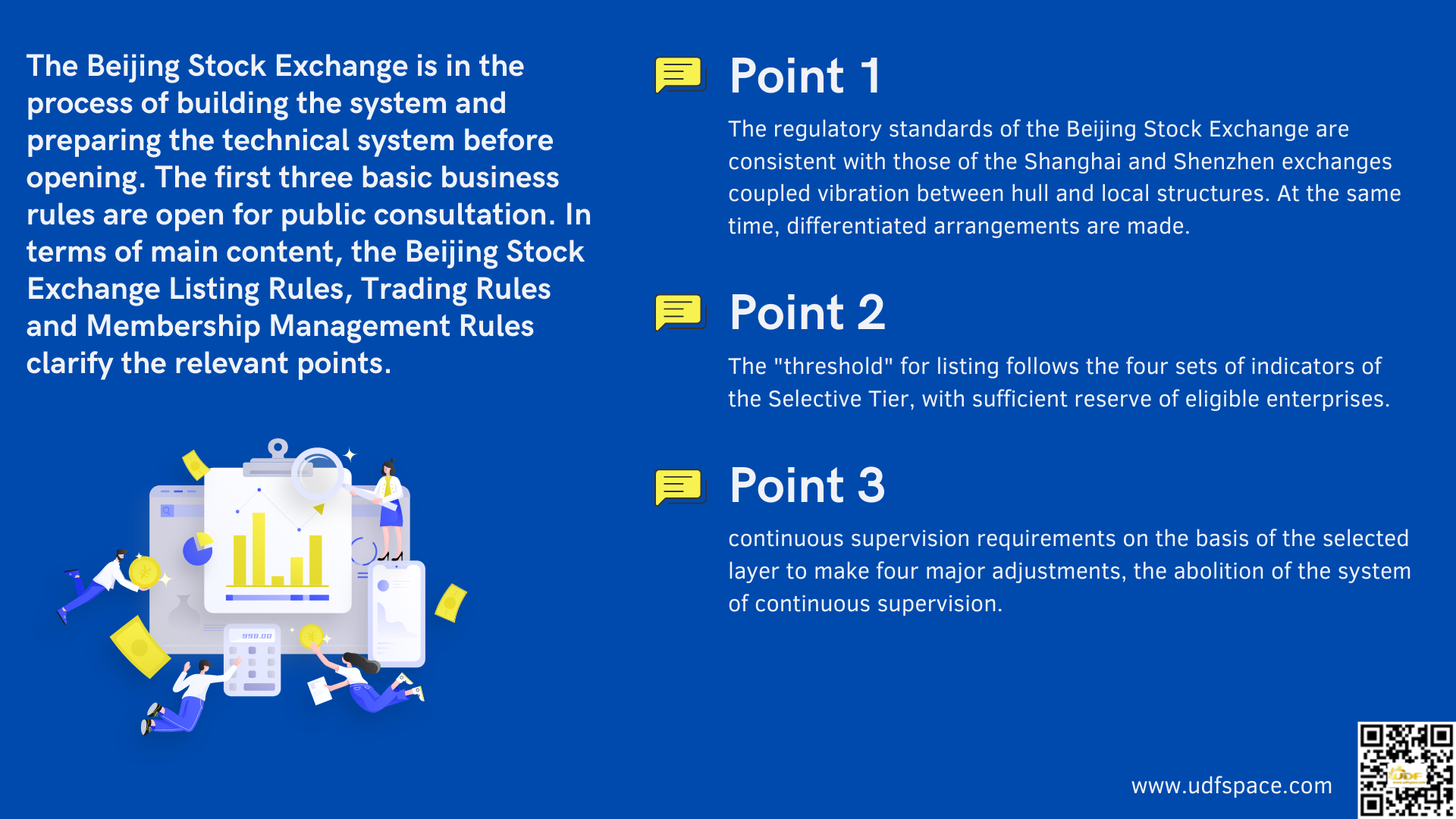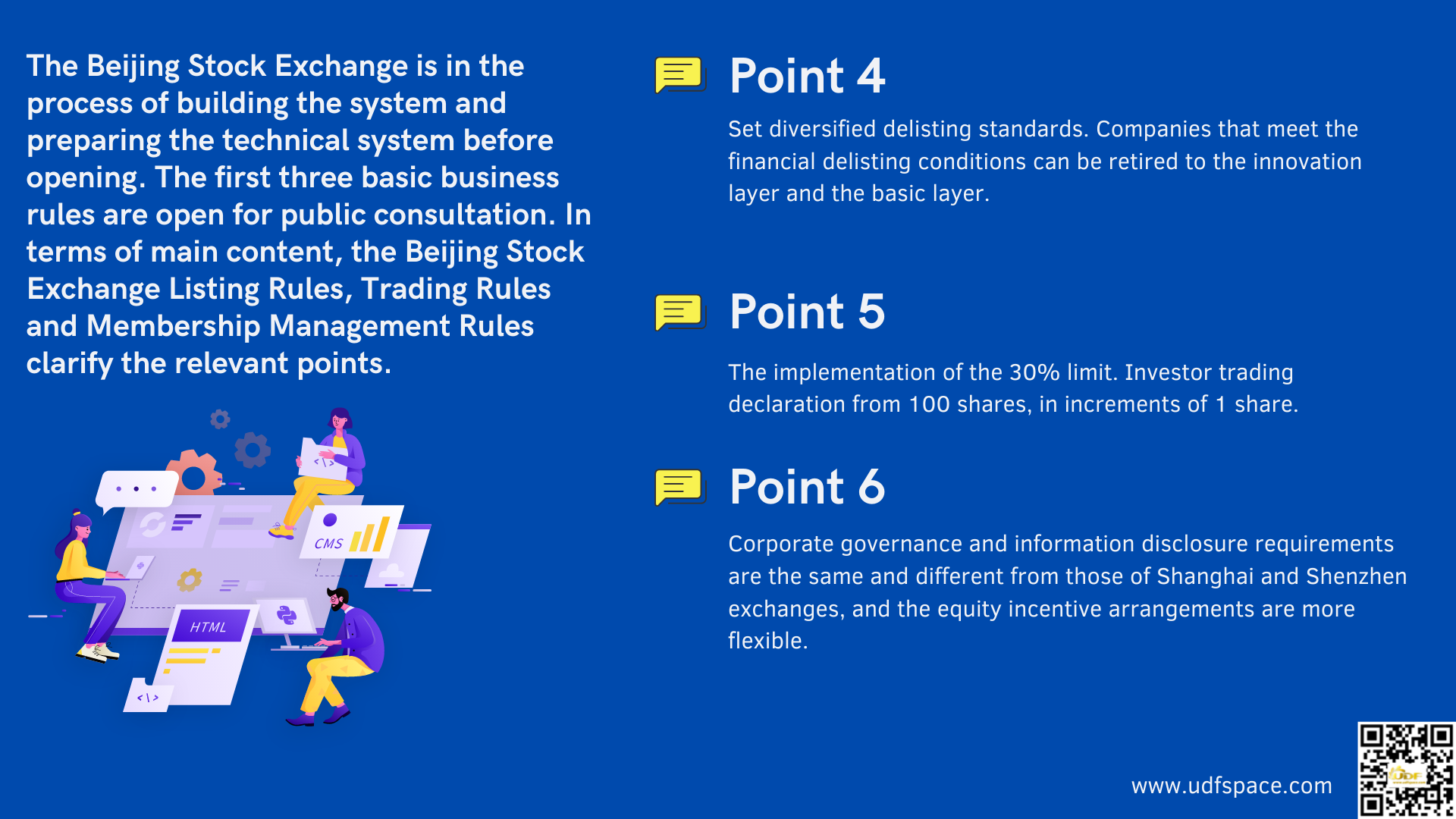The Beijing Stock Exchange is in the Process of Building the System and Preparing the Technical System Before Opening


The Beijing Stock Exchange is in the process of building the system and preparing the technical system before opening. The first three basic business rules are open for public consultation. In terms of main content, the Beijing Stock Exchange Listing Rules, Trading Rules and Membership Management Rules clarify the relevant points.
Point 1: The regulatory standards of the Beijing Stock Exchange are consistent with those of the Shanghai and Shenzhen exchanges coupled vibration between hull and local structures. At the same time, differentiated arrangements are made.
The Listing Rules, Trading Rules and Membership Rules are based on the principles of marketization and rule of law, and follow the general rules of stock exchange system construction while taking into account the characteristics of the market positioning of the Beijing Stock Exchange in serving innovative SMEs.
Point 2: The "threshold" for listing follows the four sets of indicators of the Selective Tier, with sufficient reserve of eligible enterprises.
Consistent with the listing conditions of the Selective Tier, the Beijing Stock Exchange has set four sets of criteria for market capitalization and financial conditions, which are more inclusive. Standard 1 focuses on financial indicators, with market capitalization playing an auxiliary role; Standard 2 focuses on market capitalization criteria and is suitable for enterprises with clear profit models and rapid business development; Standard 3 targets enterprises with certain R&D capabilities and whose R&D results have initially realized business revenue; Standard 4 is mainly for innovative unprofitable enterprises with high market recognition and strong R&D and innovation capabilities.
Point 3: Continuous supervision requirements on the basis of the selected layer to make four major adjustments, the abolition of the system of continuous supervision.
First, corporate governance standards are more optimized; second, information disclosure requirements are more specific; third, suspension and resumption of trading management is stricter; fourth, the main responsibility is clearer, no longer the sponsor broker "lifetime" continuous supervision, the sponsor to perform prescribed time limit within the responsibility of continuous supervision.
Point 4: Set diversified delisting standards. Companies that meet the financial delisting conditions can be retired to the innovation layer and the basic layer.
Specifically, in terms of the delisting criteria for "who should be delisted", the Listing Rules clarify the arrangements for active delisting and mandatory delisting by the Beijing Stock Exchange, with mandatory delisting divided into four categories: trading, financial, regulatory, and major violations. Among them, the financial class mandatory delisting inspection period of 2 years, the indicators do not cross-apply.
Point 5: The implementation of the 30% limit. Investor trading declaration from 100 shares, in increments of 1 share.
The overall trading system of the Beijing Stock Exchange continues the core trading system of continuous bidding on the selected layer, the limit, reporting rules, price stabilization mechanism and other major provisions remain unchanged, reflecting the trading characteristics of small and medium-sized stocks, while ensuring the stability and continuity of market transactions.
Point 6: Corporate governance and information disclosure requirements are the same and different from those of Shanghai and Shenzhen exchanges, and the equity incentive arrangements are more flexible.
The Listing Rules fully absorb the prior practical experience of the selective layer and make characteristic and differentiated institutional arrangements to effectively balance the cost and benefit of SME regulation in capital market. For example, there is no mandatory requirement for the cash dividend ratio of Beijing Stock Exchange public company, and companies are encouraged to "do what they can" according to their own reality; for equity incentives, the exercise price of options is allowed to be reasonably set lower than the market price of the stock to enhance the effectiveness of incentives, provided that full disclosure and corresponding procedures are fulfilled.
















































First, please LoginComment After ~